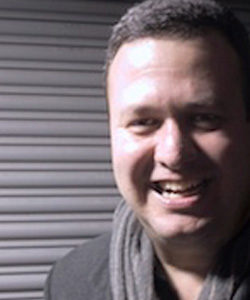2016 Annual Conference Blog: Friday, January 15th
8:30 a.m. – MORNING SESSION I: Is the Current Higher Education Funding Model Sustainable?

 Kent Chabotar, President Emeritus and Professor of Political Science, Guilford College
Kent Chabotar, President Emeritus and Professor of Political Science, Guilford College
Neil Theobald, President, Temple University
Kent John Chabotar began our morning with his session, “Visions of Higher Education: Is the Current Model Sustainable?” He described his job as “the Hell” part of this topic. He is going to talk about data that is not comforting.
He began by describing the idea of, The End of the University as We Know It. Chabotar reviewed literature and quotes that criticized higher education (see slide deck).
Underlying assumptions: Predictions of any future are hard. Today we have Cloud computing, Skype, iPad, Facebook, twitter, iPhones, etc. It is hard to talk about the future. But here are some things that we can predict: By 2020 total undergrad will grow by 10% to 19.7 million of which 75% will be public institutions. Private education accounts for 40% of the institution yet only 15% of the college population attends such schools. 1/3 of colleges didn’t meet enrollment goals in 2015 (of survey respondents). The average debt among graduates of 4-year colleges is $28,950. 80% of the public and 40% of college presidents believe that college education is not worth the price. Between 2000 and 2011, debt doubled to $205 billion dollars while fundraising dropt 40%. In 20 years, net tuition has increased 220% compared to 120% cost of living. The average annual tuition in public institution has increased 29%, or $2,068. Chabotar notes that we need to focus on net tuition and put reality back into the equation. Over half of college bound seniors rule out college on sticker price alone. Students don’t understand financial aid options.
Chabotar turned now to Moody’s 2016 Outlook. The most important thing for Moody’s is admissions. This is what the most recent outlook suggestions: Moderate revenue is going to grow, mainly because states are loosening the purse strings just a little bit. All revenue streams are expected to grow modestly. On-going expense discipline will contribute to steady operation performance and reserves will remain stable with continued strategic capital investment. The outlook will be more positive if the growth is more than 5%. More information from Moody’s was presented and can be found on the slide deck.
The most at risk, those who are least likely to adapt and survive, are universities in rural locations, low enrollment, high tuition dependence, high tuition discount, low endowment, high debt, few unallocated dollars, and those that do not differentiate/look too much like the competition.
Chabotar concluded by saying that he has put us through hell for the last 20 minutes, and Neil is here to save us!
With that, Neil Theobald began his presentation on the current higher education funding model. He began by asking if the model is sustainable and responding that it is not, but we can talk about what to do about it. Theobald suggests that the statistics are clear: if you are 18 years old, you should pursue a university education, as it gives you a return on your investment. Families are more interested in the here and now. This should be an easy sell, but we must confront a “new pragmatism”- a higher scrutiny. We really need to talk about the value that universities provide and why an individual should invest in a degree from a particular institution.
Theobald argues that we have gotten ourselves into a cul-de-sac, as we have presented unsustainable choices. Universities are either accessible, affordable, or excellent. At Temple University, Theobald has attempted to promote an accessible, affordable, and exception option.
The bottom 25% of the lowest income levels, only 8% of their children gradate from college. In the top 25%, 75% of children graduate by the age of 24.
The four foci at Temple are:
Faculty Excellence:
- More full-time hires, bucking the higher education trend
- 200+ new tenured or tenure-line faculty since 2012
- 60% of non-tenure-line faculty have mutli-year contracts
4-Year Graduation
- Current trend is that the longer time to degree relates to higher student debt.
- Temple implemented FlyIn4, which maps a path to graduation in 4 years.
- Students on track save an aggregate of $20 million
Accessibility and Diversity
- Theobald asks what are other ways for students to showcase themselves beyond the SAT? They set up a model in which the student has a choice. They still send in grades/references. They can choose, however, to send in SAT or write 4 essays. 20% of the 2019 class used the “Temple Option” and it yielded the most diverse freshman class in Temple history.
Aggressive Cost Containment
- The first three ideas above either lower revenue or cost money. Thus, they implemented aggressive cost containment.
- Temple held the line while higher education tuition hikes outpaced inflation
- Decentralized financial aid decision-making holds growth below CPI: 1.8% per year.
- Commonwealth funding has not caught up- off 13.4% since 2012
- In-state tuition has risen by 2.4%
- They have identified five priority areas in their higher, aggressively recruited international students, cut 3 varsity sports,
Theobald asks, What are the Dividends of the Sustainability Strategy?
He describes Temple as thriving in an era of “new pragmatism”. They view scrutiny as an opportunity. He notes that the road to sustainable funding is paved with concrete steps. Concrete tactical action is needed. He concludes, stating that when we prove relevance and value while prizing excellence, we sustain our institutions for the future.
10:00 a.m. – MORNING SESSION II: Are We Too Reliant on Student Loans?
 Robert Shireman, The Century Foundation
Robert Shireman, The Century Foundation
Bob Shireman described his goal to answer the question, “If higher education is so great, and such an excellent value, why are people so upset about the debt they need to take on to attain a degree in higher education?” Shireman showed a poster from Rose State University (see slide deck) that was used to try to get students to stay in school. The college Scorecard from the US Department of Education says, “On average, college graduates make $1 million more over a lifetime than high school graduates”. Shireman describes this as misleading and deceptive. Giving someone the impression that they should take out a loan for the financial benefits of college is like telling someone to take out a loan to play the stock market. By putting the $50,000 in the stock market, based on historical returns, you would earn over a million dollars in a lifetime.
Shireman moved into a discussion of the distribution of earnings by education level (see slide deck). The high school compared with college distribution charges show that there are more people on the higher income side of the slide. About half of the people who go to college, however, don’t graduate. So we cannot say that by borrowing, you will have a bachelor’s degree. Unlike borrowing for a car or house, when borrowing for college, you don’t necessarily have a degree. With this, Shireman showed the distribution of degrees based on those who attending and completed college. Shown together (see slide deck), the true picture is shown. The best way to get the messages across is by having someone who is trustworthy to the individual advising them about whether or not this debt will be good for them. It is important to add the disclaimer that the future is a best predictor of the past, but there have been periods of the collapse of the credential.
Shireman discussed Senator Simon (his first boss) and initiatives that they worked on. Taxation is the best way to avoid issues of debt, but if we are going have student loans, we need to be able to tell students that the loans they are taking are safe. If the value of the credential collapses, if they don’t get the high paying job, etc., they need to know they will be OK. They need an insurance policy. The goal a system that an 18 year old can understand, but rather those who advise them can understand and use with them.
Shireman continued by describing the role of Clinton, Gingrich, Spelling, Ted Kennedy, and others in student debt discussion. Bush signed the income based repayment (at 15%) plan. Obama included in the health care bill to 10% for some borrowers and then by regulation over time it has been reduced for more and more borrowers. With the simplicity of messaging, Shireman feels that we “have arrived” at the highest level. Saying “no one has to pay more than 10% of their income for their student loan” seems to be understandable, make sense, and makes people feel protected from the downside.
In the grand scheme of things, Shireman note, 10% is not necessarily the definition of affordability. He describes a college where people borrow $250,000-$300,000 a year to attend and no one worries about it…. Where is that? WestPoint. When students sign up they agree to serve in the military or pay the loan back. Students can drop out after the first year and have no liability. If they continue, the loan is forgivable and the job is guaranteed. It is telling that it is a huge amount of debt, but with the advising and financial incentives, the system seems to work.
Public perception sees colleges as both used car salesman. Additionally, the shift in terms of a young person getting a decent paying job without a college degree were 60% in 1979 and 27% in 2014. This undermines the importance of attending.
Shireman concludes with an emphasis on inequality and how we might move forward. The three goals include: affordability, upward mobility, and quality.
- Affordability: We have given colleges money, but haven’t done anything to understand what they did with it.
- Upward Mobility: We get dinged by Moody’s when we engage in our mission of supporting low-income students. We need to change the equation so that when institutions worry about their bottom line, rather than saying we need to find more rich students; we need to change the equation to say we need to find more poor students.
- Quality: The program has to be strong.
Affordability and Mobility work together. Shireman suggests that there needs to be more money in the system. When the government is funding an institution, they are funding maximum next price. Schools are saying EFC, work, grans, and safe loans are needed to meet cost of attendance. There also needs to be some flexibility to allow for alternative need methodology. Shireman suggests that GRAD Plus loans need to be capped or eliminated. He suggests a capitation grant for economically underrepresented students, AND, by enrolling low-income students, institutions can earn safe loan funds that can used for higher income and graduate students.
The quality issue can be addressed by program review processes that involved independent experts outside the university and reviewing actual student work. Shireman also suggests that examples of typical student work be made public..
11:00 a.m. – EXPERTS RESPOND: Reverse Press Conference with Senior Education Writers
 Scott Jaschik, Inside Higher Education
Scott Jaschik, Inside Higher Education
The conference concluding with Scott Jaschik sharing his thoughts and observations related to financial aid issues, followed by a question and answer period from those in attendance.


No comments have been posted yet.